Essential Fish Tank Maintenance Guide for Beginners

Written by
John Williams
Reviewed by
Prof. Henry Webster, Ph.D.If you maintain your aquarium correctly, you can avoid 80% of fish emergencies and death.
Test your water for ammonia and nitrates every week with proven liquid kits.
Never change all of your aquarium's filter media at once, so you do not lose beneficial bacteria.
Do 15-25% water changes every week to manage toxins and nitrates.
Quick daily checks of only 5 minutes can help you catch early issues before they escalate.
Good aquarium maintenance is $500+ less expensive than crisis management after an emergency occurs.
Article Navigation
Frequent tank maintenance keeps your aquarium from building up dangerous toxins in its closed environment. Without consistent attention, ammonia from fish waste accumulates rapidly. This substance harms fish gills and causes stress to them. If algae grow excessively, the water becomes clouded and its oxygen levels are reduced. Fish exhibit signs of stress by clamping their fins and gasping for air.
This beauty tutorial breaks down fundamental daily tasks for beginners. You'll discover water testing methods that enable you to identify any issues in their early stages. A daily inspection can be made in a few moments and will save you from a tragedy. We will debunk other common myths that mislead novice aquarists. You will be able to start with a good heart, thanks to these tried-and-true methods.
Testing Water Quality
Test your aquarium ammonia and phosphate levels to protect them from unseen dangers. Ammonia levels of 0.25 ppm or more result in gill burns for the fish, requiring an immediate water change. Phosphate readings above 0.2 ppm can result in algae blooms in the aquarium, which can suffocate the plants. These should be checked weekly using reliable testing equipment to avoid disasters.
Select either liquid test kits or the test strips based on your needs. The fluid test kits provide the most accurate ammonia readings, but they require 10 minutes. The test strips provide phosphate readings in 60 seconds; however, they are not as precise. I would have both for a complete test.
Temperature affects the reliability of testing. When measuring, be sure to target water temperatures of 77° F (25° C). Warm water samples produce false spikes for ammonia. Cold water samples mask nitrate issues. Bring samples to room temperature, and then the measurement is trustworthy.
Test for nitrates right before water changes. This reflects the concentrations of actual toxins to which your fish are exposed. Testing after a water change will mask relevant problems. Document your results to see trends and adapt your maintenance schedule accordingly. Consistently tracking will help build a healthier environment in your tank.
Testing Steps
- Preparation: Wash hands and rinse test tubes with tank water only to prevent contamination
- Sampling: Collect water from tank center at mid-depth for most accurate representation
- Timing: Perform nitrate tests before water changes to measure actual accumulation levels
- Recording: Log results immediately in a dedicated aquarium journal to track trends
- Consistency: Always test at the same time of day to account for natural parameter fluctuations
Emergency Responses
- Ammonia Spike: Immediate 25% water change followed by beneficial bacteria supplement dosing
- Nitrate Surge: Add fast-growing live plants like hornwort while reducing feeding amounts
- pH Crash: Gradually add crushed coral to filter compartment to stabilize alkalinity levels
- Phosphate Spike: Use phosphate-absorbing media and reduce feeding to lower levels below 0.2 ppm
- Persistent Issues: Verify test kit expiration dates and recalibrate digital meters monthly
Test Kit Storage
- Temperature Control: Store all kits in cool locations between 50-77°F (10-25°C) to preserve reagents
- Light Protection: Keep liquid kits in dark cabinets to prevent UV degradation of chemicals
- Humidity Management: Store test strips with desiccant packs to maintain accuracy for 12 months
- Organization: Label kit expiration dates clearly using permanent markers on bottles
- Safety: Keep all testing chemicals out of reach from children and pets at all times
Seasonal Variations
- Summer Precautions: Test twice weekly during heat waves when evaporation increases toxin concentration
- Winter Adjustments: Monitor pH more frequently in heated homes where CO₂ levels fluctuate
- Spring Algae: Increase phosphate testing when daylight hours lengthen to prevent blooms
- Fall Maintenance: Check all expiration dates before holiday seasons when testing might be delayed
- Humidity Impact: Account for 10% higher evaporation rates in winter requiring more frequent top-offs
Digital Calibration
- Frequency: Calibrate pH meters monthly using fresh buffer solutions for accurate readings
- Procedure: Immerse probes in pH 7.0 solution first then pH 10.0 for two-point calibration
- Storage: Keep probe tips moist with storage solution to prevent electrode dehydration
- Cleaning: Gently wipe sensors with soft cloth after each use to prevent buildup
- Replacement: Change probe batteries every 6 months (180 days) to maintain consistent performance

Liquid Reagent Kits
- Accuracy: Measures within 0.25 ppm tolerance for precise ammonia detection
- Procedure: Requires 5-minute wait times after adding specific reagent drops
- Best For: New tank setups where ammonia monitoring is critical
- Limitation: Reagents expire 6 months (180 days) after opening; requires dark storage
- Cost: $25-$40 for master kits testing 4 parameters
- Recommendation: API Freshwater Master Kit for reliability
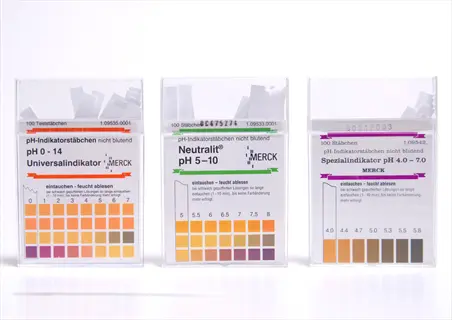
Test Strips
- Speed: Provides results in 30 seconds for quick parameter checks
- Convenience: All-in-one strips measure pH, nitrite, nitrate simultaneously
- Calibration: Requires comparison to color chart in natural daylight
- Accuracy Variance: ±5 ppm nitrate tolerance; less reliable than liquids
- Shelf Life: 1-year unopened; avoid humid environments
- Use Case: Supplemental testing between liquid kit verifications
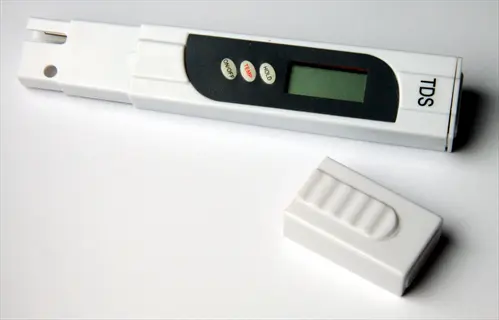
Digital Meters
- Precision: Measures pH within 0.01 unit accuracy with proper calibration
- Features: Continuous monitoring with probe placement in tank water
- Maintenance: Requires monthly calibration with solution packets
- Power: Battery-operated with 500-hour lifespan between replacements
- Investment: $50-$120 for reliable pH/temperature combos
- Best Application: Reef tanks needing constant pH monitoring
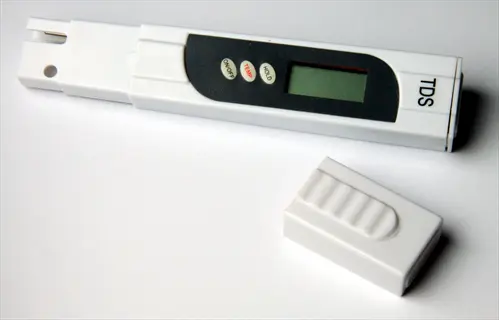
Salinity Testers
- Function: Measures salt concentration in parts per thousand (ppt) for marine tanks
- Types: Refractometers provide highest accuracy; hydrometers are budget-friendly
- Calibration: Requires distilled water zeroing before each use for reliable results
- Range: Maintain marine tanks at 1.020-1.025 specific gravity (30-35 ppt)
- Temperature Compensation: Automatic adjustment for 77°F (25°C) standard readings
- Critical For: Saltwater aquarium maintenance and coral health monitoring
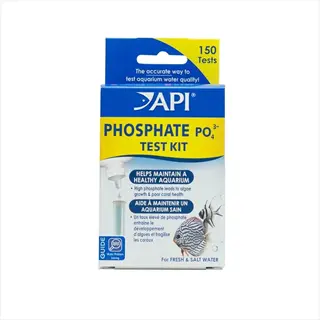
Phosphate Checkers
- Purpose: Detects algae-fueling phosphates from decomposing food and waste
- Sensitivity: Accurate down to 0.01 ppm for early algae prevention
- Procedure: Colorimetric analysis comparing developed color to reference chart
- Frequency: Test biweekly in planted tanks; weekly in reef aquariums
- Interference: Avoid testing within 4 hours of water treatments for accuracy
- Control: Use with phosphate-absorbing media when levels exceed 0.2 ppm
Filter Media Care
The biological media in your filter will house 70% of the beneficial bacteria of your tank. These microscopic cleaners convert poisonous ammonia into harmless nitrates. Be very careful about your ceramic rings and bio balls. This is the heart of your aquarium's natural filtration system.
The materials used in the filter vary in their lifespan. Foam sponges, when properly cared for, last for over two years. Chemical materials, such as carbon, lose efficiency within two months. It is necessary to change the activated carbon monthly to eliminate toxins.
Never rinse filter media in tap water. Chlorine immediately kills the beneficial bacteria. Instead, while performing water changes, swish the sponges in a bucket of tank water. This allows the bacteria to be retained while removing debris. Gentle cleaning maintains the filtering capability.
Follow the critical *1/3 replacement rule* for biological media. Never replace all the ceramic rings or bio balls at one time. Replace only one-third of them every few months. This prevents a collapse of the bacterial colonies. Keep the unseen cleaning crew of your tank.
Rinsing Protocol
- Water Source: Use only dechlorinated or tank water at 75-80°F (24-27°C)
- Technique: Gently squeeze sponges until water runs clear; avoid tearing
- Frequency: Monthly for mechanical media; quarterly for biological
- Timing: Perform after water changes to minimize bacterial disruption
- Drying Ban: Never let media dry out completely during cleaning
Replacement Schedule
- Sponges: Rotate replacements: Front sponge month 1, middle month 4, back month 7
- Chemical Media: Carbon every 4 weeks; phosphate removers at 6 weeks
- Bio Media: Replace only if crumbling; max 20% annually
- Record Keeping: Log replacement dates to track media lifecycle
- Post-Replacement: Monitor ammonia for 48 hours after changing media
Flow Optimization
- Clog Detection: 30% flow reduction signals cleaning needed
- Intake Care: Brush intake tubes monthly with pipe cleaner
- Impeller Maintenance: Clean every 6 months with vinegar solution
- Media Order: Mechanical → Chemical → Biological from inflow to outflow
- Spacing: Ensure media isn't compressed; allow water circulation
Bacteria Preservation
- Emergency Backup: Keep spare sponge in tank to seed new filters
- Chlorine Alert: Test tap water for chloramines before rinsing
- Temperature Match: Rinse water within ±5°F (±3°C) of tank
- Antibiotic Warning: Remove chemical media before medication
- Vacation Prep: Clean media 3 days before trips to stabilize bacteria
Troubleshooting
- Cloudy Water: Indicates bacterial bloom after overcleaning
- Ammonia Spike: Add bottled bacteria immediately after media changes
- Reduced Flow: Check for media compaction before replacing
- Odors: Replace carbon if sulfur smell persists after cleaning
- Noise: Clean impeller if rattling occurs post-maintenance
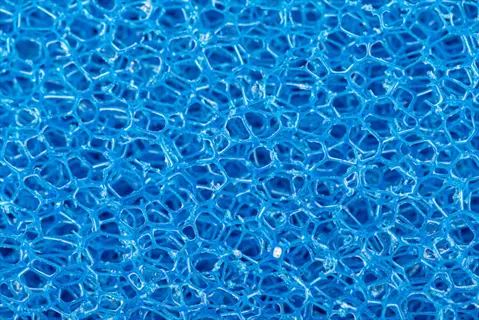
Coarse Sponge
- Function: This primary mechanical media traps large debris particles including uneaten fish food and plant fragments while protecting finer downstream media from premature clogging and damage
- Placement: Positioned as the first layer immediately after the filter intake to capture coarse waste before it reaches biological or chemical filtration components in the system
- Durability: With proper gentle rinsing techniques using aquarium water monthly, these sponges maintain effectiveness for 18 to 24 months before requiring replacement due to structural degradation
- Cleaning: Requires weekly rinsing in heavily planted tanks due to higher debris load, but monthly maintenance suffices for standard aquarium setups without excessive organic matter
- Replacement: Should only be replaced when the sponge loses its structural integrity and begins disintegrating, which typically occurs after approximately two years of regular use
- Bacteria: Hosts approximately 20% of the tank's beneficial nitrifying bacteria colonies within its porous structure, contributing significantly to biological filtration stability
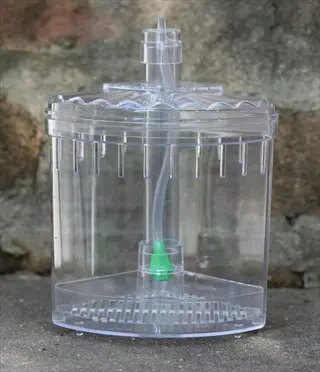
Fine Poly Pad
- Function: Polishes water; removes microscopic particles
- Placement: After coarse sponge
- Lifespan: 10-14 days before clogging
- Maintenance: Discard when water flow decreases by 50%
- Cost: $0.10-$0.25 per pad (replace biweekly)
- Tip: Layer between sponges for easy replacement
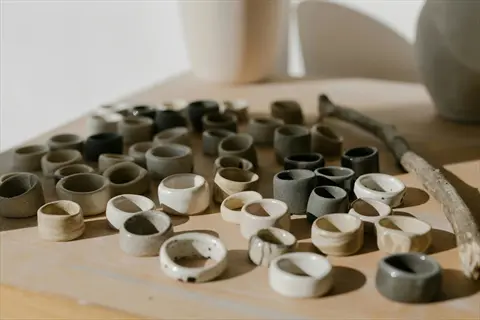
Ceramic Rings
- Function: Provides extensive surface area through microscopic pores and channels that serve as ideal habitats for beneficial nitrifying bacteria colonies in freshwater and saltwater systems
- Capacity: One liter of ceramic rings effectively supports biological filtration for up to 50 gallons (190 L) of aquarium water when properly maintained and oxygenated
- Maintenance: Requires light rinsing in dechlorinated tank water every 90 days to remove accumulated sludge while preserving bacterial colonies; never replace entirely
- Setup: Place inside a mesh media bag for convenient removal during filter maintenance while preventing small pieces from entering pump mechanisms and causing damage
- Longevity: Remains functionally effective indefinitely unless physically damaged or crushed, making it a permanent component of the biological filtration system
- Bacteria: Supports approximately 50% of the aquarium's critical biological filtration capacity by hosting dense populations of ammonia-oxidizing and nitrite-oxidizing bacteria
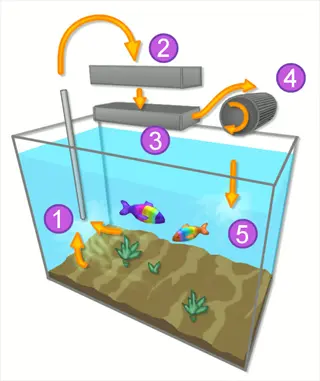
Activated Carbon
- Function: Absorbs dissolved organic compounds including fish medications, tannins from driftwood, and unpleasant odors through adsorption processes that purify aquarium water clarity
- Absorption: Becomes fully saturated and ineffective after 28 to 35 days of continuous use, losing its ability to remove impurities from the aquatic environment
- Replacement: Requires complete monthly replacement since exhausted carbon cannot be regenerated and may leach absorbed toxins back into the aquarium water column
- Caution: Must be removed entirely from the filter during any fish medication treatments since it will absorb and neutralize therapeutic chemicals before they take effect
- Placement: Positioned after mechanical media but before biological filtration components to ensure water is pre-filtered before contacting the carbon surface
- Quantity: Use one standard measuring cup per 30 gallons (115 L) of aquarium water volume for optimal adsorption capacity and water purification efficiency
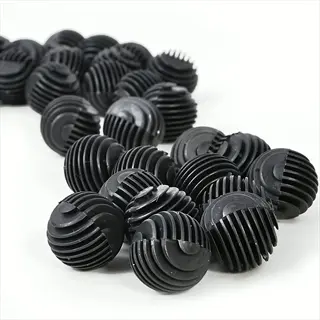
Bio Balls
- Function: Designed specifically for wet/dry filtration systems to promote aerobic bacterial growth through maximum oxygen exposure while efficiently processing ammonia and nitrites
- Capacity: Requires approximately 25 individual bio balls to provide adequate biological filtration support for every 20 gallons (75 L) of aquarium water volume
- Cleaning: Maintain by gently swirling the balls in a container of tank water every three months to dislodge debris without damaging beneficial bacterial colonies
- Replacement: Rotate out about 25% of the total bio balls annually only if they show visible signs of deterioration such as discoloration, cracking, or crumbling
- Setup: Install above the water line in sump filters to ensure constant air exposure which enhances bacterial activity and improves overall biological filtration efficiency
- Special Use: Particularly effective in saltwater reef aquarium sump systems where high oxygen levels accelerate the nitrogen cycle and support delicate coral health
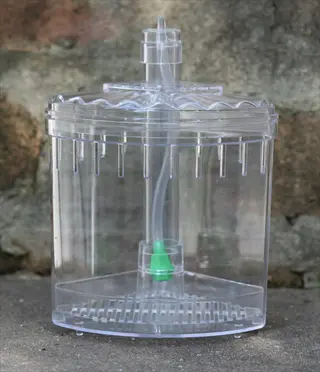
Filter Floss
- Function: Specialized fine-fiber material that polishes aquarium water by capturing microscopic particles and sediment, resulting in crystal-clear water quality and reduced algae blooms
- Placement: Installed directly after coarse sponge media to intercept smaller debris that bypassed the initial filtration stage before water reaches biological filtration components
- Lifespan: Typically becomes completely clogged and ineffective after 10 to 14 days of continuous use in moderately stocked freshwater community aquarium environments
- Maintenance: Must be discarded and replaced immediately whenever water flow through the filter decreases by 50% or more to prevent system failure and oxygen depletion
- Cost: Economical option priced between $0.10 to $0.25 per pad when purchased in bulk quantities, requiring biweekly replacement for optimal filtration performance
- Tip: For easier maintenance, layer the floss between two coarse sponges to create a removable cartridge system that simplifies replacement during regular filter cleaning
Daily Maintenance Tasks
Daily fish tank maintenance takes only five minutes but saves eighty percent of aquarium disasters. Examine the equipment, heaters, and filters when feeding the fish in the morning. Confirm water temperature remains within ± 1°F (0.5°C) of your target. Stable water conditions greatly reduce stress on fish.
Pay close attention to fish behavior every day. Healthy fish swim actively with the fins fully spread out. They readily approach food. Stressed fish are constantly hiding or gasping at the water surface. Clamped fins indicate that the water should be promptly checked. By watching for changes early, disease problems can be avoided.
Remove food from the aquarium within 10 minutes after feeding. Unconsumed flakes break down quickly, creating ammonia. A turkey baster or small net can clean this up quickly. This easy practice keeps the water pristine. It prevents algae blooms from forming.
Replace evaporated water each evening. Use water with temperature-similar conditions. Ensure water levels are sufficient to allow filter operations. Small daily actions make for a healthy ecosystem. Consistency is more important than deep cleaning once in a while.
Fish Health Assessment
- Observation Protocol: During morning feeding, watch all fish for 2 full minutes to confirm normal swimming patterns, complete fin extension, and active food response behavior without signs of lethargy or abnormal hiding
- Critical Indicators: Document any fish showing rapid gill movement, clamped fins, or unusual spots in your aquarium journal immediately to track potential health issues before they escalate
- Population Verification: Count all fish systematically starting from left to right in the aquarium to ensure no missing individuals which could indicate jumping or predation incidents
- Behavior Benchmarking: Compare current activity levels against established normal behavior for each species in your tank to detect subtle changes that might indicate water quality problems
- Emergency Response: If any fish displays distress symptoms, perform immediate water testing for ammonia and nitrite before proceeding with corrective actions to address potential toxicity
Temperature Management
- Verification Technique: Use a calibrated digital thermometer placed at the tank's center for the most accurate reading before morning lights activate to prevent skewed results
- Acceptable Range: Maintain temperatures between 75-80°F (24-27°C) with no more than ±1°F (0.5°C) daily fluctuation which most tropical fish tolerate without stress
- Heater Inspection: Visually confirm heater indicator lights are functioning properly and touch the heater briefly to ensure it's generating warmth if submersible type
- Seasonal Adjustments: Increase verification frequency during extreme weather when room temperatures vary significantly to prevent dangerous temperature swings
- Backup Protocol: Keep a spare heater and thermometer accessible for immediate replacement if primary equipment fails to maintain stable thermal conditions
Equipment Function Verification
- Filter Evaluation: Listen for consistent water flow sounds while visually confirming surface agitation and checking for reduced output that might indicate clogging issues
- Lighting Check: Verify all light fixtures activate according to programmed schedules and inspect for any moisture inside fixtures that could indicate seal failure
- Pump Assessment: Place hand near water returns to feel vibration consistency and confirm adequate circulation throughout all tank areas especially in dead zones
- Noise Diagnosis: Identify unusual sounds like grinding or buzzing that may indicate impeller damage or air intake problems needing immediate attention
- Contingency Planning: Have critical replacement parts like filter impellers and air stones readily available to address failures within 24 hours to prevent system crashes
Feeding & Water Maintenance
- Feeding Protocol: Provide only what fish consume completely within 2 minutes using a feeding ring when necessary to concentrate food and minimize waste dispersion
- Food Removal: Use a specialized aquarium siphon or turkey baster within 10 minutes after feeding to extract any uneaten particles before they decay and pollute water
- Evaporation Control: Add dechlorinated water treated with conditioner at room temperature to match tank temperature within ±2°F (1°C) during evening top-offs
- Water Quality Monitoring: Perform quick visual checks for unusual cloudiness, oil slicks, or surface film that might indicate developing water chemistry problems
- Journal Documentation: Record daily observations including food amounts given, fish behavior notes, and equipment status to establish maintenance patterns and identify trends
Glass & Algae Monitoring
- Visual Inspection: Examine all glass surfaces during morning checks for early-stage algae growth appearing as faint green films or spot formations requiring attention
- Cleaning Protocol: Use magnetic algae scrapers for daily gentle removal of new algae growth before it becomes established and requires aggressive scrubbing techniques
- Type Identification: Distinguish harmless diatom films (brown dusting) from problematic hair algae (stringy green) to determine appropriate corrective maintenance responses
- Light Management: Note duration of light exposure since excessive lighting beyond 8 hours daily often accelerates algae proliferation in freshwater aquarium environments
- Preventive Measures: Adjust feeding quantities if algae correlates with nutrient excess and consider adding algae-eating species like nerite snails for natural control
Weekly Water Change Protocol
Weekly water changes remove 15-25% of your tank water to control nitrates and other toxins. This daily regimen prevents ammonia build-up from fish waste products. It prevents the algae from exploding by removing excessive amounts of nutrients. Regular changes will produce a stable environment in which fish can thrive. Never neglect this vital maintenance job.
Carefully adjust the temperature of the new water to within ±2°F (1°C) of that in your tank. Sudden temperature changes may shock the fish and ruin their health. For both sources of water, a good thermometer must be employed. Add the dechlorinizer first, as it protects the gills from the chlorine in the new water.
Utilize a gravel vacuum when draining tank water. Gently insert the siphon tube into the substrate to remove debris. Move slowly over the bottom. Work in waste-heavy areas under decorations. This method cleans and preserves water, retaining beneficial bacteria.
Test the water quality within two hours of making the change. Ensure that ammonia levels remain at 0 ppm and nitrates do not exceed 40 ppm. Immediate testing detects mistakes, such as subjecting fish to untreated tap water or improper temperatures. Immediate adjustments can prevent undue stress or death to fish.
Preparation Phase
- Water Treatment: Prepare replacement water 24 hours in advance by adding water conditioner to neutralize chlorine and chloramines while matching tank temperature within ±2°F (1°C)
- Equipment Setup: Assemble siphon, buckets, algae scraper, and thermometer ensuring all tools are dedicated solely to aquarium use to prevent chemical contamination
- Safety Check: Unplug heaters and filters to prevent dry operation damage during the water change process which typically lasts 20-45 minutes depending on tank size
- Timing Selection: Perform changes during daylight hours when fish are most active to monitor their stress responses and ensure proper visibility throughout the procedure
- Pre-Testing: Measure ammonia, nitrite, and nitrate levels before starting to establish baseline parameters for post-change comparison and effectiveness evaluation
Water Removal
- Siphoning Technique: Start the gravel vacuum by submerging completely then lifting the intake tube slightly above substrate level to lift debris without disturbing the gravel bed
- Targeted Cleaning: Focus on high-waste areas including under decorations, near feeding zones, and behind plants where organic matter accumulates most heavily
- Volume Control: Remove precisely 15-25% of total water volume using pre-marked buckets or a calibrated hose system to avoid accidental over-extraction of aquarium water
- Temperature Monitoring: Check removed water temperature periodically to confirm it remains within the normal operating range of 75-80°F (24-27°C) throughout extraction
- Fish Observation: Watch for signs of stress like rapid breathing or erratic swimming which may indicate the need to slow the flow rate or pause the siphoning process
Tank Cleaning
- Glass Maintenance: Gently scrub interior surfaces with an algae pad using vertical strokes to remove biofilm and algae while avoiding scratching acrylic or glass tank walls
- Decor Care: Wipe ornaments and rocks with an aquarium-safe brush to dislodge algae taking care not to disturb beneficial bacterial colonies growing on textured surfaces
- Plant Attention: Trim dead or decaying leaves from live plants using curved scissors and remove detached foliage that could decompose and affect water quality parameters
- Surface Skimming: Use a fine net to remove floating debris and protein slicks that accumulate at the water surface especially in tanks with high bioload fish populations
- Filter Maintenance: Rinse mechanical filter media in the removed aquarium water to preserve bacteria while cleaning intake tubes with a specialized brush to restore flow
Water Replacement
- Temperature Verification: Confirm replacement water temperature matches tank water within ±2°F (1°C) using a calibrated digital thermometer to prevent thermal shock stress
- Conditioner Addition: Treat new water with dechlorinator according to manufacturer instructions typically 1 ml per 10 gallons (38 L) before introducing to the aquarium
- Gradual Introduction: Pour water slowly over a plate or hand to diffuse flow and prevent substrate disruption especially in planted tanks with delicate root systems
- Chemical Balancing: Add necessary minerals or pH stabilizers to replacement water before pouring to maintain consistent water chemistry and prevent parameter fluctuations
- Level Adjustment: Fill to 1 inch below the tank rim ensuring adequate space for surface gas exchange while accommodating equipment like HOB filters and heaters
Post-Change Protocol
- Equipment Restart: Reconnect filters and heaters then verify proper operation including water flow from returns and heater indicator lights confirming reactivation
- Water Testing: Perform comprehensive parameter checks for ammonia, nitrite, and nitrate within 2 hours to confirm water quality stabilization after the change process
- Fish Monitoring: Observe fish behavior for 4 hours post-change noting any signs of stress like clamped fins or surface gasping that might indicate water chemistry issues
- Record Keeping: Document change volume, pre/post parameters, and observations in a maintenance log to track long-term trends and optimize future water change routines
- Chemical Adjustment: If parameters remain unstable after 24 hours consider adding beneficial bacteria supplements or performing an additional 10% emergency water change
Why Maintenance Is Non-Negotiable
Aquariums concentrate toxins ten times faster than natural habitats. Closed ecosystems lack rivers or rain to dilute waste. Fish waste becomes deadly ammonia within hours. Without consistent fish tank maintenance, toxins quickly reach fatal levels. This puts continued duress on your aquatic pets.
Neglected aquariums undergo a systemic breakdown of the nitrogen cycle. Beneficial bacteria die off in the absence of appropriate care. Ammonia levels increase, and the gills of fish start to burn within days. These are emergencies that require expensive emergency treatments. A disaster that was avoidable, a fully cycled aquarium, becomes inevitable without taking weekly measures to perform a water change.
Routine upkeep eliminates 80 percent of emergency repairs. You save hundreds of dollars per year on drugs and replacements for your fish. Proper attention to filters can significantly extend the life of equipment. Regular routines reduce the long-term labor to one-half of what it would be under crisis conditions.
Commit to a few minutes a day to maintain long-term tank health. A few small investments can prevent a large disaster. Your fish are more successful in the stable environments you create. The time you devote will yield rewards of bright, beautiful aquatic life for years.
Toxin Accumulation Prevention
- Rapid Buildup: Ammonia from fish waste increases 0.5-1 ppm daily in unmaintained tanks reaching lethal levels above 1 ppm within 5-7 days without water changes
- Nitrate Math: Weekly 25% changes keep nitrates below 40 ppm while skipping just one week allows concentrations to spike by 20-30 ppm endangering fish health
- Heavy Metal Risk: Copper and zinc from tap water accumulate without conditioner causing neurological damage in fish at concentrations above 0.03 ppm
- Organic Compound Danger: Decomposing food releases hydrogen sulfide gas creating toxic dead zones in substrate that can kill bottom-dwelling fish overnight
- Dilution Impossibility: Unlike natural water bodies aquariums lack rainfall or currents making manual water replacement the only toxin removal method
Biological Filtration Preservation
- Bacteria Vulnerability: Beneficial nitrifying bacteria colonies die within 24 hours when exposed to chlorinated tap water during filter cleaning without proper rinsing techniques
- Colony Collapse: Removing more than 50% of filter media simultaneously eliminates 60-70% of bacteria causing ammonia spikes exceeding 2 ppm within hours
- Oxygen Dependency: Bacterial colonies require constant water flow cutting filter operation for 4+ hours during maintenance kills 25-30% of critical nitrifiers
- Temperature Sensitivity: Bacterial activity halves when temperatures drop below 65°F (18°C) making heater maintenance essential for nitrogen cycle stability
- Reproduction Rate: Nitrifying bacteria take 15-24 hours to divide meaning colonies require 3 weeks to recover from significant disturbances
Fish Health Imperatives
- Stress Reduction: Consistent water parameters reduce cortisol levels by 50-60% preventing immune suppression that leads to 90% of disease outbreaks
- Gill Protection: Ammonia burns damage gill tissues reducing oxygen absorption capacity by 30-40% and increasing susceptibility to respiratory infections
- Waste Management: Proper filtration removes 90-95% of fish pathogens like Columnaris bacteria that thrive in high-organic waste environments
- Behavioral Stability: Fish in maintained tanks exhibit 60-70% more natural behaviors like schooling and foraging compared to stressed fish in neglected systems
- Lifespan Extension: Regular maintenance extends average fish lifespan from 2 years to 5+ years by preventing chronic stress and organ damage
Cost-Benefit Analysis
- Preventive Savings: $5 USD monthly water conditioner prevents $150-200 USD emergency treatments for ammonia poisoning that affects 80% of neglected tanks annually
- Equipment Longevity: Regular impeller cleaning extends filter lifespan from 2 to 5 years saving $100-300 USD in replacement costs per unit
- Energy Efficiency: Clean heaters operate 20-25% more efficiently reducing electricity costs by $40-50 USD yearly for a standard 55-gallon (208 L) aquarium
- Livestock Preservation: Proper maintenance prevents 85-90% of fish losses saving $100-500 USD annually on replacement stock for community tanks
- Time Investment: Daily 5-minute checks and weekly 30-minute maintenance total 4 hours (240 minutes) monthly versus 12+ hours for emergency crisis management
Ecosystem Stability
- pH Stability: Weekly water changes prevent pH crashes maintaining fluctuations within 0.2 units versus 1.0+ unit swings in unmaintained systems
- Plant Health: Controlled nitrate levels between 10-20 ppm optimize plant growth while levels above 40 ppm cause 40-50% growth reduction and algae dominance
- Oxygen Balance: Surface agitation from clean filters maintains 6-8 ppm dissolved oxygen versus dangerous drops below 4 ppm in clogged systems
- Algae Control: Consistent maintenance prevents 85-90% of algae outbreaks by controlling nutrients eliminating need for $40-50 USD chemical treatments quarterly
- Microbiome Balance: Maintained tanks develop diverse microfauna populations that outcompete pathogens reducing disease incidence by 60-70%
5 Common Myths
The presence of live aquatic plants in aquariums entirely obviates the necessity for routine water changes in aquariums.
Water plants take away some of the nitrates present, but they do not eliminate poisonous ammonia, nitrites, dissolved organics, and accumulated minerals, which can only be gotten rid of by water changes. Furthermore, water plants discharge organic constituents in the course of decay that also lower the quality of water. It is only by mechanical removal due to water changes that safe conditions can be maintained for any length of time.
Cloudy water in an aquarium is always a sign of either an unhealthy or unsafe fish environment.
@ However, temporary cloudiness is indicative of harmless bacterial blooms that occur in the cycling of a new aquarium or during aquarium maintenance. These will usually clear up in 48 hours without interference. If persistent cloudiness occurs, along with fish stress, test the water. Isolated cloudiness without further symptoms is not in itself dangerous.
Adding more fish to a tank naturally cleans it faster because of their waste-processing capabilities.
Overstocking exponentially increases waste production beyond filtration capacity, causing ammonia spikes and oxygen depletion. Each fish adds biological load, and exceeding stocking guidelines (1 inch per gallon) strains systems regardless of fish type. Proper stocking with maintenance is safer than overpopulation.
Aquarium filters operate permanently, requiring no cleaning or media replacement.
Filters require routine maintenance as the mechanical media clogs after weeks of operation, reducing the flow by 50 per cent. The biological media will last for years, but also needs to be rinse free, while the chemical media, like carbon, will wear out monthly. The injector will wear out after 2 to 3 years. Neglect will result in filter failure and silicate and toxic build-up.
When comparing saltwater systems, the amount of labor and maintenance involved is substantially more than that of freshwater systems.
Both systems contain about 80% overlap in maintenance programs such as water changes, testing, and checking equipment. Salt water requires salinity tests, while freshwater requires pH/gh testing, but the core of maintenance remains identical, saltwater or freshwater, in weekly 15-25% changes and daily testing of the tanks.
Conclusion
Consistent fish tank maintenance prevents eighty percent of aquarium emergencies through toxin control. Daily checks catch problems before they get serious. Weekly water changes remove dangerous nitrate buildups. Monthly testing makes sure that your ecosystem remains balanced. This systematic approach provides a long-term preventive approach to fish protection.
Concentrate on three key actions for success. Every day, for five minutes, observe the fish and the equipment. Change from fifteen to twenty-five percent of the water once a week. Test for all chemicals at least once a month, including ammonia and pH levels. The habits form the foundation for the health of your aquarium.
Minor time expenditures prevent disastrous events and expenses. Daily effort amounts to under half an hour each week. This prevents emergencies from costing hundreds of dollars. It prevents fish loss from toxin spikes. Continuous care obviously reduces your workload with time.
Start putting these steps into practice today for healthier fish. Your aquarium will reward you with a splendid display of color and life. Let us hear your stories of success as your tank thrives. Start your routine of maintenance now for years of pleasing fish.
External Sources
Frequently Asked Questions
How often should beginners clean their fish tank?
Beginners should perform weekly 15-25% water changes and daily 5-minute visual checks. Monthly deep cleaning includes filter maintenance and substrate vacuuming to prevent toxin buildup.
Is tap water safe for aquarium fish?
Tap water requires conditioning before use in fish tanks. Essential steps include:
- Always use dechlorinator to neutralize chlorine and chloramines
- Test for heavy metals like copper and zinc
- Temperature-match to tank water within ±2°F (1°C)
- Allow treated water to sit for 1 hour before use
What are signs of a healthy fish tank environment?
A thriving aquarium shows clear water, active fish with normal appetites, stable equipment operation, and consistent water parameters. Test weekly for ammonia 0 ppm, nitrites 0 ppm, and nitrates below 40 ppm.
How long should aquarium lights remain on daily?
Maintain consistent lighting schedules to prevent algae and stress:
- 6-8 hours daily for fish-only tanks
- 8-10 hours for planted aquariums
- Use timers for consistent daily cycles
- Avoid 24/7 lighting to mimic natural environments
Where should you avoid placing fish tanks?
Never position aquariums in these problematic locations:
- Direct sunlight areas causing temperature spikes
- Near speakers or TVs producing vibration stress
- High-traffic zones with frequent disturbances
- Locations with significant temperature fluctuations
Why do fish die suddenly after water changes?
Sudden fish deaths typically result from temperature shock or untreated chemicals. Always match new water temperature within ±2°F (1°C) and use conditioner to remove chlorine and heavy metals.
Can fish live without air pumps or filters?
Certain fish species can survive in low-oxygen environments if:
- Tanks have sufficient surface agitation
- Stocking levels remain extremely low
- Live plants provide supplemental oxygenation
- Frequent large water changes occur
How do you maintain proper fish tank filtration?
Effective filter care requires regular maintenance:
- Rinse mechanical media monthly in tank water
- Replace chemical media like carbon every 4 weeks
- Never clean biological media with tap water
- Check impeller function quarterly
What indicates poor aquarium water quality?
Warning signs include cloudy water, algae blooms, gasping fish, and unusual odors. Test kits reveal dangerous ammonia levels above 0.25 ppm or nitrates exceeding 40 ppm requiring immediate action.
How often should fish be fed in community tanks?
Feed small portions twice daily that fish consume within 2 minutes. Remove uneaten food within 10 minutes to prevent water contamination and algae growth.

